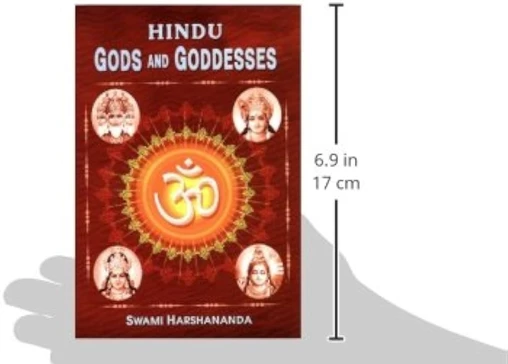The Trimurti
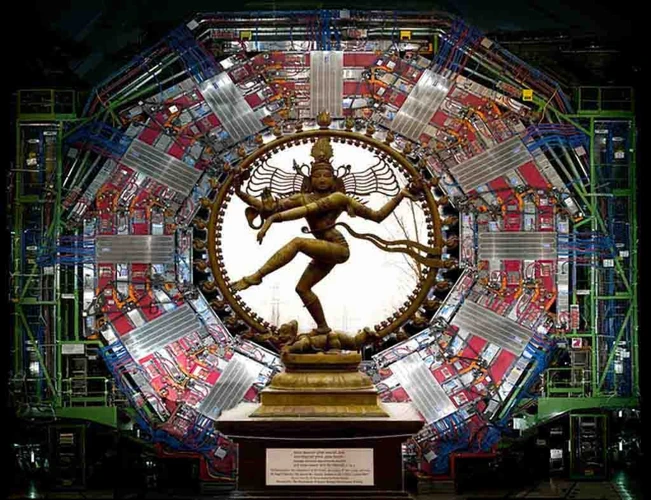
The Trimurti, consisting of Brahma, Vishnu, and Shiva, encapsulates the cosmic forces that shape and govern the universe in Hindu mythology. Brahma, the creator, is associated with the birth of all life and is often depicted with four heads symbolizing his vast knowledge and wisdom. Vishnu, the preserver, maintains the balance and harmony of the world, reincarnating whenever evil threatens to disrupt cosmic order. Shiva, the destroyer, signifies the cyclical nature of existence, demolishing the old to make way for the new. Together, they form a divine trinity, serving distinct roles yet intricately connected in the cosmic dance of creation, preservation, and destruction. To fully understand the significance of the Trimurti in Hindu mythology, one must explore the /sacred-scriptures-hindu-mythology-vedas-upanishads/, where the ancient Hindu scriptures provide deeper insights into their roles and symbolism. Additionally, the Trimurti’s influence can be observed in the /role-mythology-hindu-rituals-festivals/ and celebrated during various Hindu festivals. Step into this fascinating world of divine dynamics, and unlock the secrets of the Trimurti and its profound influence on Hindu cosmology and spirituality.
Brahma: The Creator
Brahma, also known as the Creator, holds a significant role in Hindu mythology. Brahma is often depicted with four heads, each representing a different aspect of his cosmic power. These heads symbolize his ability to see in all directions, signifying his omniscience and wisdom. As the Creator, Brahma is responsible for the birth and creation of all beings and the universe itself. He is associated with the creation of the world as described in Hindu scriptures, such as the /sacred-scriptures-hindu-mythology-vedas-upanishads/. Despite being a highly revered deity, Brahma is not worshiped as actively as other gods and goddesses in Hinduism. This is due to a curse placed upon him by the goddess Shakti, resulting in limited temples and devotees dedicated solely to his worship. Nevertheless, Brahma’s influence and presence can be found in various mythological stories and artworks, depicting his role as the divine architect of the universe. It is fascinating to delve into the mythological world and explore the diverse pantheon of deities and creatures, such as the ones found in the /fascinating-world-hindu-mythological-creatures/ that Brahma brought into existence through his creative powers.
Vishnu: The Preserver
Vishnu, known as the Preserver in Hindu mythology, is one of the most revered gods in the pantheon. As the preserver, Vishnu is responsible for maintaining order, balance, and harmony in the universe. He embodies compassion, righteousness, and protection. Often depicted with a serene expression and adorned with royal garments, Vishnu is believed to have incarnated on Earth in various forms, known as avatars. These avatars, such as Rama and Krishna, are revered for their virtuous deeds and teachings.
Vishnu is portrayed holding four primary attributes, collectively known as the Chaturbhuj. One of these attributes, the Sudarshana Chakra, is a spinning disc-like weapon that symbolizes the power of divine intellect and righteous judgment. Another attribute, the Shankha (conch shell), represents the primordial sound of creation, and its auspicious nature is believed to ward off negative energies. The Gada (mace) signifies strength, power, and the ability to eradicate evil forces, while the Padma (lotus) symbolizes purity, spiritual liberation, and the cycle of life and rebirth.
Vishnu is often depicted reclining on the celestial serpent Shesha-Naga in the cosmic ocean, representing the infinite expanse of time and space. This portrayal signifies his role as the eternal force, guiding the universe through the cycles of creation, preservation, and dissolution.
Devotees of Vishnu worship him through various rituals and ceremonies. Temples dedicated to Vishnu, such as the famous Tirupati Balaji Temple in India, attract millions of pilgrims each year. One of the most significant festivals celebrated in honor of Vishnu is Diwali, the Festival of Lights, which symbolizes the triumph of light over darkness and good over evil.
The stories and legends associated with Vishnu and his avatars resonate deeply within Hindu mythology. Each avatar, whether it is Rama’s triumph over the demon king Ravana or Krishna’s divine teachings in the Bhagavad Gita, embodies different aspects of Vishnu’s divine nature and serves as a moral compass for believers.
Vishnu’s role as the Preserver showcases his unwavering commitment to safeguarding the universe from chaos and maintaining cosmic harmony. Through his avatars and timeless teachings, Vishnu continues to inspire millions of worshippers around the world, reminding them of the importance of righteousness, compassion, and the eternal quest for spiritual enlightenment.
Shiva: The Destroyer
Devi: The Supreme Goddess

Devi, the Supreme Goddess in Hindu mythology, embodies the divine feminine energy that encompasses the universe. As the mother of all creation, she manifests in various forms to protect and nurture the world. One of her manifestations is Lakshmi, the Goddess of Wealth and Prosperity, who brings abundance and good fortune to those who worship her. Another form is Saraswati, the Goddess of Knowledge and Arts, who bestows wisdom, creativity, and artistic talents upon her devotees. Devi’s power and invincibility are epitomized in her fierce form as Durga, the warrior goddess who battles against evil forces and protects righteousness. Whether she is worshipped as a loving motherly figure or a formidable warrior, Devi is revered and adored by millions around the world. Her multifaceted nature is acknowledged in Hindu rituals and festivals, where devotees seek her blessings for strength, prosperity, and spiritual growth. The worship of Devi reflects the deep reverence Hindus hold for the divine feminine and its integral role in the cosmic order.
Lakshmi: The Goddess of Wealth and Prosperity
Saraswati: The Goddess of Knowledge and Arts
In Hindu mythology, Saraswati is revered as the goddess of knowledge, arts, music, and learning. She is depicted as a graceful and serene deity, adorned in pristine white garments, symbolizing purity and transcendence. Saraswati typically holds a veena, a musical instrument, representing the harmony and rhythm of creative expression. As the embodiment of wisdom and intellect, Saraswati is believed to bestow blessings upon those who seek knowledge and understanding. Students and scholars often invoke her divine guidance for success in their academic pursuits. Artists and musicians also look to Saraswati as a source of inspiration and creativity, seeking her blessings to excel in their chosen fields. It is through Saraswati’s grace that individuals are able to tap into their inner potential and unlock the depths of their talents. In Hindu rituals and festivals, Saraswati is worshipped with reverence and devotion, particularly during Saraswati Puja, where prayers are offered to invoke her blessings. The significance of Saraswati extends beyond her role as a goddess, shaping the cultural and artistic heritage of Hindu society. Through her presence, she amplifies the importance of knowledge, education, and artistic expression in the world.
Durga: The Invincible Goddess
Durga, the Invincible Goddess, holds a significant place in Hindu mythology and is revered as a symbol of feminine power and courage. Portrayed with multiple arms and riding a ferocious lion or tiger, Durga represents the embodiment of divine strength and protection. She is often depicted slaying the buffalo demon, Mahishasura, who had wreaked havoc in the heavens and on earth. This epic battle symbolizes the triumph of good over evil, and Durga’s victory signifies the restoration of cosmic order.
Durga is known by various names and forms across different regions of India, such as Devi, Amba, and Parvati. Each name represents a different aspect of her divine nature, highlighting her various roles and attributes. As Devi, she is the supreme goddess and the ultimate power in the universe. As Amba, she is the nurturing mother figure, providing love and protection to her devotees. And as Parvati, she embodies the ideal wife and partner to Lord Shiva.
The festival of Navaratri (meaning “nine nights”) is dedicated to the worship of Durga and is celebrated with great fervor and devotion throughout India. During this period, devotees engage in devotional rituals, music, dance, and elaborate decorations to honor the goddess and seek her blessings. The tenth day, known as Dussehra or Vijayadashami, marks the culmination of Navaratri and commemorates the victory of Durga over Mahishasura.
Beyond her role as a fierce warrior, Durga is also seen as a compassionate and benevolent deity. She showers her devotees with blessings, grants their wishes, and protects them from harm. Many believe that invoking Durga’s name and seeking her guidance can help overcome obstacles and challenges in life.
Durga, the Invincible Goddess, symbolizes the triumph of good over evil and represents the limitless power of femininity. Her captivating presence and fierce attributes have captured the imagination of millions, making her a beloved figure in Hindu mythology. Whether worshipped as Devi, Amba, or Parvati, Durga reigns supreme as the ultimate protector and source of strength for her devotees.
Major Gods and Goddesses

Among the vast pantheon of Hindu gods and goddesses, a few stand out as major figures in mythology and worshipped entities. These major gods and goddesses include the beloved Hanuman, the monkey god known for his unwavering devotion to Lord Rama and his incredible strength; Ganesha, the elephant-headed god revered as the remover of obstacles and the patron of arts and sciences; and Krishna, the divine cowherd who embodies love, compassion, and divine wisdom. Each of these deities has their own unique stories and characteristics, capturing the hearts and imaginations of millions. The tales of Hanuman’s bravery, Ganesha’s wisdom, and Krishna’s charm have been passed down through generations, inspiring devotion and admiration. Exploring the legends and symbolism associated with these major gods and goddesses unveils not only their individual significance but also the fundamental values and beliefs of Hindu culture.
Hanuman: The Monkey God
Hanuman: The Monkey God
In Hindu mythology, Hanuman holds a special place as the Monkey God. He is revered for his immense strength, unwavering devotion, and remarkable courage. Hanuman is believed to be an incarnation of Lord Shiva’s divine power, which took the form of a monkey to aid Lord Rama in his quest to rescue his wife Sita from the demon king Ravana. Hanuman’s unwavering loyalty and boundless dedication to Lord Rama have made him one of the most beloved deities in Hindu mythology.
Hanuman is often depicted as a muscular deity with the face of a monkey, symbolizing his animalistic nature and his connection to the wilderness. He is portrayed carrying a mace, which represents his physical strength and ability to defeat evil forces. Hanuman’s devotion to Lord Rama is considered unparalleled, as he wholeheartedly dedicated his life to serving and protecting him.
One of the most well-known stories about Hanuman is his famous leap across the ocean to reach Lanka, where Sita was held captive. With his incredible strength, he leaped across the vast distance, displaying his devotion to Lord Rama and his unwavering determination to fulfill his mission. This act of devotion and bravery has cemented Hanuman’s position as a symbol of loyalty, courage, and devotion in Hindu mythology.
Devotees of Hanuman often worship him to seek his blessings for strength, protection, and victory in their endeavors. Tuesday is considered a sacred day to worship Hanuman, and his devotees chant the Hanuman Chalisa, a hymn dedicated to him, to invoke his blessings and grace. Hanuman Jayanti, his birthday, is celebrated with great fervor across India, with devotees participating in processions, prayer ceremonies, and sacred rituals.
Within the vast pantheon of Hindu deities, Hanuman’s character stands out for his loyalty, bravery, and devotion. His stories inspire millions to embrace dedication and face life’s challenges with unwavering determination. As the Monkey God, Hanuman embodies the virtues of strength, devotion, and courage, making him an integral part of Hindu mythology.
Ganesha: The Elephant God
Ganesha, also known as Ganapati or Vinayaka, is one of the most beloved and widely worshiped gods in Hindu mythology. As the son of Lord Shiva and Goddess Parvati, Ganesha is easily recognizable by his distinct elephant-headed appearance. His physical form is a result of a fascinating myth where, in a moment of absentmindedness, his own father Shiva accidentally beheads him and later replaces it with the head of an elephant, making him unique among all the gods. This endearing and iconic representation serves as a reminder of Ganesha’s wisdom, intelligence, and ability to overcome obstacles. Ganesha is revered as the remover of obstacles and the god of beginnings, making him a prominent figure in various rituals and ceremonies.
Ganesha is often depicted with a plump human body adorned with lavish clothing and jewelry, with his elephant head symbolizing knowledge, wisdom, and understanding. His large elephant ears represent his ability to listen attentively, while his small eyes denote his keen perception and attention to detail. Ganesha’s most distinctive feature is his trunk, which is believed to possess great strength and dexterity. It is said to be capable of uprooting obstacles, as well as bestowing blessings and granting wishes to his devotees.
Ganesha is depicted holding various symbolic objects in his hands. The most popular of these is the modak, a sweet dumpling that symbolizes the rewards of spiritual practice and signifies Ganesha’s role as a bestower of prosperity and happiness. Other common accessories in his hands include an axe, symbolizing the removal of attachments and negative forces, and a lotus flower, which represents purity and enlightenment.
In Hindu mythology, Ganesha is revered as a patron of arts and sciences, making him an inspiration for artists, musicians, writers, and scholars. He is also associated with intellect, wisdom, and success, and is often invoked at the beginning of new ventures or important undertakings. Devotees seek Ganesha’s blessings to overcome obstacles, gain knowledge, and achieve success in their endeavors.
Ganesha holds a significant place in Hindu mythology, representing auspiciousness, intellect, and the power to overcome challenges. Devotees turn to him for guidance, protection, and blessings, believing that his divine presence will enable them to navigate the complexities of life with wisdom and grace.
Krishna: The Divine Cowherd
Other Gods and Goddesses
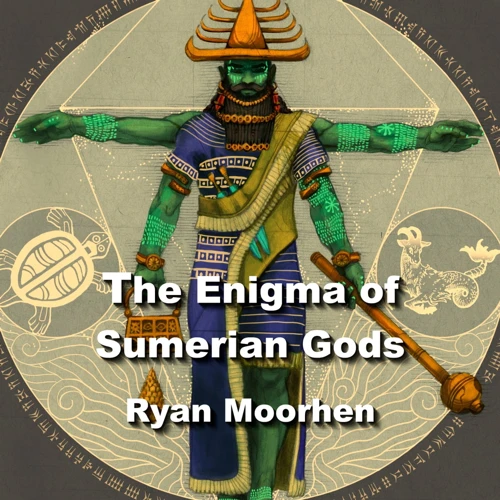
In addition to the Trimurti and Devi, Hindu mythology boasts a multitude of other gods and goddesses, each with their own unique characteristics and significance. Kali, the fierce goddess of time and death, is depicted with a menacing appearance, symbolizing the destructive aspect of existence. Rama, the heroic prince, is revered for his courage and righteousness and is best known for his epic journey to rescue his wife, Sita, from the clutches of the demon king Ravana. Surya, the sun god, radiates light and warmth, representing life and vitality. These are just a few examples of the vast pantheon of deities in Hindu mythology, each playing a distinct role and inspiring devotion among millions. To explore the fascinating world of in Hindu mythology, one can delve into the rich tapestry of stories and symbolism associated with these divine beings. Whether in the form of an html table or a html list, the myriad of gods and goddesses will enchant and captivate those who seek a deeper understanding of Hindu spirituality and mythology.
Kali: The Fierce Goddess of Time and Death
It is interesting to note that despite her fearsome image, Kali also embodies compassion and motherly love. She is often depicted with her tongue protruding out, signifying her thirst for evil forces and her ability to devour negative energies to protect her devotees. Kali is also associated with the cremation grounds, where she dances among the funeral pyres, reminding us of the transient nature of life and the constant cycle of death and rebirth.
Worship of Kali involves intense devotion, rituals, and offerings. Her devotees seek her blessings to overcome obstacles, destroy negativity, and attain spiritual liberation. Kali is particularly revered during the festival of Kali Puja, where her presence is celebrated with fervor and devotion.
Kali represents the darkness that exists within all of us, as well as the relentless force that destroys evil and ignorance. Her fierce form reminds us of the importance of confronting our fears and embracing the transient nature of life. Through her worship, devotees seek both her protection and the liberation that comes from confronting the harsh realities of existence.
Rama: The Heroic Prince
Surya: The Sun God
Minor Gods and Goddesses
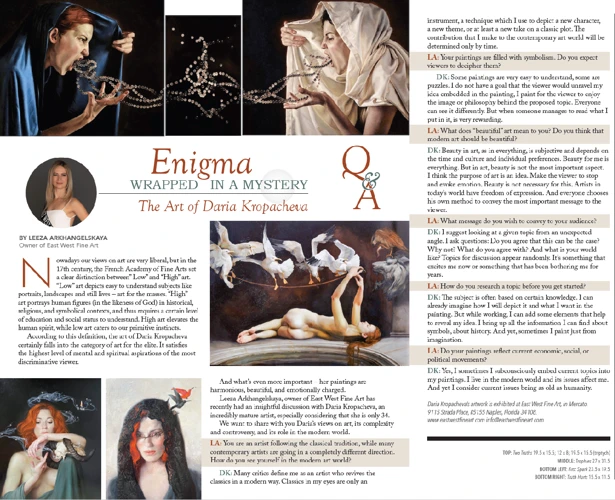
In addition to the major gods and goddesses, Hindu mythology is replete with a diverse pantheon of minor deities who hold their own significance and roles. These lesser-known but equally revered gods and goddesses add depth and complexity to the Hindu mythological landscape. Among them is Indra, the lord of heavens, who wields the thunderbolt and signifies strength and courage. Vayu, the god of wind, is believed to carry the life force and vital energy. Another notable deity is Agni, the fire god, who is associated with purification and transformation. These minor gods and goddesses, although often overshadowed by their more prominent counterparts, play vital roles in various mythological tales and are revered in specific rituals and ceremonies. Exploring their stories and symbolism unravels the intricate tapestry of Hindu mythology, where every deity, big or small, contributes to the grand narrative of cosmic creation and spiritual enlightenment.
Indra: The Lord of Heavens
Vayu: The God of Wind
Vayu, known as the God of Wind, holds a significant role in Hindu mythology and is revered for his power and influence over the air. Believed to be one of the oldest Vedic gods, Vayu is portrayed as a fierce and swift deity, representing the vital breath of life. In Hindu scriptures, he is described as the father of Lord Hanuman, the mighty monkey god and an ardent devotee of Lord Rama. The winds that Vayu controls are considered essential for the cycle of life, as they carry the life-giving Prana, or vital energy. Vayu’s presence can be felt in the gentle breeze that brings relief on a hot summer day or the powerful gusts of a storm.
In Hindu iconography, Vayu is depicted as a well-built deity carrying a flag and a staff. His mount, or Vahana, is the deer, symbolizing swiftness. As the wind god, Vayu has a vital role in Hindu rituals and ceremonies. He is invoked for blessings during important occasions, such as weddings and yagnas (fire rituals), where the hymn dedicated to him is chanted to seek his protection and guidance.
Vayu’s significance extends beyond the physical aspect of wind. He is also associated with the intangible qualities of the mind, intellect, and life force. In Ayurveda, the ancient Indian system of medicine, Vayu is part of the tridosha theory, representing the Vata dosha, which governs movement and energy in the body.
Exploring the mythology and symbolism surrounding Vayu provides a deeper understanding of the interconnectedness between the physical and metaphysical aspects of wind. It invites us to appreciate the power and grace of nature, reminding us of the invisible forces that shape our world. So next time you feel a gentle breeze caressing your face or a strong gust blowing through your hair, remember that it is Vayu, the God of Wind, reminding us of his presence and the vital breath of life that he brings.
Agni: The Fire God
Agni, known as the Fire God in Hindu mythology, holds a significant role in the cosmic order and daily life. Revered as a deity of immense power and purity, Agni is personified as the divine essence of fire. Agni’s symbolism represents not only physical fire but also the transformative and purifying aspects of flames. The flames of Agni symbolize the burning away of impurities, allowing for rebirth and renewal. In Hindu rituals and ceremonies, Agni is invoked as the divine intermediary between humans and the gods, acting as a channel for offerings and prayers. Agni’s iconography portrays him with red or golden complexion, often depicted with two or more heads and arms. He carries a flaming torch and rides on a chariot pulled by fiery horses. It is believed that Agni’s eyes represent the sun and the moon, reflecting his close association with celestial bodies. The divine flames of Agni are also said to reside within every hearth and sacrificial fire, ensuring the continuity of life and existence. As the Fire God, Agni is not only present in religious practices but also in everyday life, where fire is an essential element for cooking, warmth, and protection. Embracing Agni’s energy and honoring his presence brings illumination, purification, and transformation into our lives.
Creation Myths
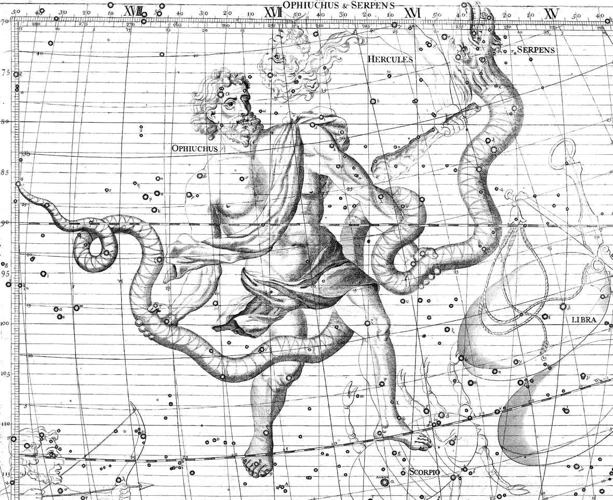
In Hindu mythology, creation myths take center stage, unraveling the mysteries of existence and shedding light on the origins of the universe. These myths showcase the diverse beliefs and interpretations held by different sects and regions within Hinduism. One popular creation myth involves the cosmic egg, known as the Hiranyagarbha or Brahmanda, from which the universe emerges. The egg symbolizes the potentiality of creation, with Brahman, the ultimate reality, residing within it. As the egg cracks open, it gives birth to the creator deity, Brahma, who then proceeds to shape the world. Another intriguing creation myth revolves around the concept of the Purusha, a primordial being whose sacrifice leads to the creation of all life forms and the creation of the different varnas (caste system). According to this myth, the universe arises from the dismembered body parts of the Purusha. These creation myths not only provide explanations for the origin of the cosmos but also offer insights into the complex philosophical concepts of Hinduism. They highlight the cyclical nature of time and the interconnectedness of all beings. The stories of creation in Hindu mythology spark contemplation on the cosmic forces that govern our existence and invite us to ponder the intricate tapestry of life itself.
Symbolism and Iconography
![]()
Symbolism and iconography play a central role in Hindu mythology, providing a visual language through which the gods and goddesses are represented and understood. Each deity is associated with a unique set of symbols and attributes that convey their powers, qualities, and cosmic significance. Brahma, for example, is often depicted with four heads, representing the four Vedas and symbolizing his vast knowledge and wisdom. Vishnu is portrayed with various icons such as the conch shell, representing the cosmic sound that sustains life, and the lotus flower, symbolizing purity and enlightenment. Shiva is commonly depicted with a third eye, indicating his ability to see beyond the physical realm, and the serpent around his neck, representing the coiled energy of spiritual awakening. The Devi, the supreme goddess, is often depicted with multiple arms, each holding symbolic objects associated with her various powers and attributes. These symbols and icons serve as visual cues that assist devotees in recognizing and connecting with the divine presence of the gods and goddesses. By understanding the rich symbolism and iconography, one can dive deeper into the layers of meaning within Hindu mythology and appreciate the profound cultural significance of these visual representations.
Worship and Rituals
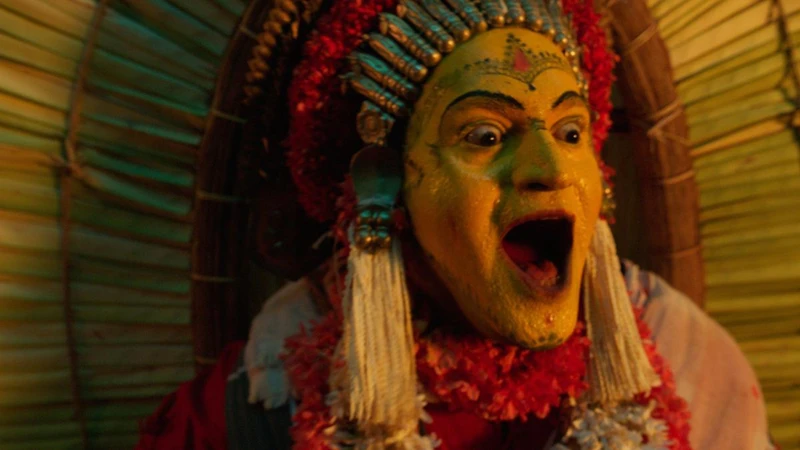
Worship and rituals play a central role in Hindu mythology, serving as a means to connect with the divine and seek blessings from the gods and goddesses. Puja, the act of offering devotion and reverence, forms the foundation of Hindu worship practices. Puja can be performed both at temples and in the privacy of one’s home, with devotees using various rituals and symbolic items to invoke the presence of the deities.
During puja, offerings such as flowers, incense, fruits, and sweets are made to the gods and goddesses. These offerings symbolize devotion, gratitude, and surrender to the divine. Aarthi, the waving of a lit lamp in circular motions, is a ritual that signifies the removal of darkness and the spreading of divine light. Chanting mantras, sacred sounds or prayers, is another integral part of Hindu worship. Mantras are believed to have a spiritual potency that can invoke the power and blessings of the deities.
Hindu worship is not limited to specific deities but encompasses a wide range of gods and goddesses. Each deity is associated with specific qualities and aspects of life, and devotees choose the deities they feel most connected to or those who can fulfill their needs or desires. For example, individuals seeking prosperity may worship Goddess Lakshmi, while those seeking knowledge and wisdom may invoke Goddess Saraswati.
Besides regular worship at home or in temples, Hinduism also celebrates grand festivals linked to mythological events. These festivals involve elaborate rituals, decorative processions, and vibrant celebrations. Examples include Diwali, the festival of lights, and Navaratri, a nine-night festival dedicated to Goddess Durga. During these festive occasions, devotees come together to offer their prayers, participate in rituals, and express their devotion through music, dance, and elaborate feasts.
Worship and rituals in Hindu mythology are not just external practices, but deeply personal and spiritual acts that foster a connection with the divine. They provide a sense of sacredness, purity, and transcendence in the midst of everyday life. Whether it is through the elaborate rituals performed during festivals or the simple acts of daily devotion, worship and rituals are cherished traditions that continue to inspire and guide millions of Hindus around the world.
Legends and Stories
The realm of Hindu mythology is adorned with a myriad of captivating legends and fascinating stories that have been passed down through generations. These tales are not merely mythical anecdotes but hold profound meanings and teachings. Let us embark on a journey through some of the most enchanting legends and stories of Hindu mythology.
1. The Legend of Mahabharata: The epic saga of the Mahabharata chronicles the great Kurukshetra war between the Pandavas and the Kauravas. Filled with intricate plots, divine interventions, and moral dilemmas, this epic tale explores complex themes such as dharma (righteousness), loyalty, and the consequences of one’s actions.
2. The Story of Ramayana: The Ramayana tells the tale of Prince Rama, who embarks on a quest to rescue his beloved wife, Sita, from the clutches of the demon king Ravana. This epic narrative showcases courage, devotion, and the triumph of good over evil.
3. The Creation of the Universe: According to Hindu mythology, the creation of the universe is attributed to Lord Brahma. It is believed that Brahma emerged from a lotus flower that sprouted from the navel of Lord Vishnu while he was in deep meditation. This allegorical story symbolizes the cyclical nature of creation and the interconnectedness of life.
4. The Leelas of Lord Krishna: The playful and mischievous exploits of Lord Krishna, popularly known as his “leelas,” enchant devotees and followers. These stories depict Krishna’s divine childhood adventures, his mesmerizing flute music, his endearing interactions with his devotees, and his role as a compassionate guide.
5. The Birth of Goddess Durga: The legend of Goddess Durga narrates how she was created by the combined energies and powers of various gods to combat the formidable demon Mahishasura. Durga’s triumph over evil in a fierce battle symbolizes the victory of righteousness and the ultimate power of femininity.
These are just a few glimpses into the vast treasury of legends and stories in Hindu mythology. Each narrative holds its own significance, teaching valuable life lessons, and providing insights into the eternal principles that govern the universe. From divine epics to mesmerizing folktales, these stories continue to captivate individuals and ignite a sense of awe and wonder in the hearts of those who delve into their mysterious depths.
Conclusion
Frequently Asked Questions
Who is the Supreme Goddess in Hindu mythology?
The Supreme Goddess in Hindu mythology is Devi. She is the embodiment of divine feminine energy and is worshipped in various forms such as Durga, Kali, and Lakshmi.
What is the significance of the Trimurti?
The Trimurti represents the cosmic forces of creation, preservation, and destruction. Brahma, Vishnu, and Shiva together maintain the balance and order of the universe.
What is the role of Lakshmi in Hindu mythology?
Lakshmi is the Goddess of Wealth and Prosperity. She brings blessings of abundance and material well-being to those who worship her.
Who is Hanuman and why is he revered?
Hanuman is a prominent deity in Hindu mythology, known as the Monkey God. He is revered for his unwavering devotion to Lord Rama and his role in the epic Ramayana.
What is the symbolism behind Ganesha’s elephant head?
Ganesha, the Elephant God, symbolizes wisdom, intellect, and the removal of obstacles. His elephant head represents his exceptional wisdom and ability to overcome challenges.
What are some famous stories associated with Krishna?
Krishna, the Divine Cowherd, is known for his mischievous nature and captivating stories. Some of the famous stories include his childhood pranks, his teachings in the Bhagavad Gita, and his love for Radha.
Who is Kali and what does she represent?
Kali is often depicted as a fierce and powerful goddess in Hindu mythology. She represents time, death, and destruction and is believed to protect her devotees from evil forces.
What is the significance of Rama in Hindu mythology?
Rama, the heroic prince, is revered as the epitome of righteousness and virtue. His journey and triumph over the demon king Ravana serves as a moral compass for individuals seeking to live a righteous life.
Who is Surya and why is he worshipped?
Surya is the Sun God in Hindu mythology. He is worshipped for his vital role in providing light, warmth, and energy to sustain life on earth.
What are some minor gods in Hindu mythology?
Some minor gods in Hindu mythology include Indra, the Lord of Heavens; Vayu, the God of Wind; and Agni, the Fire God. Although lesser-known, they play significant roles in various aspects of Hindu cosmology and rituals.

